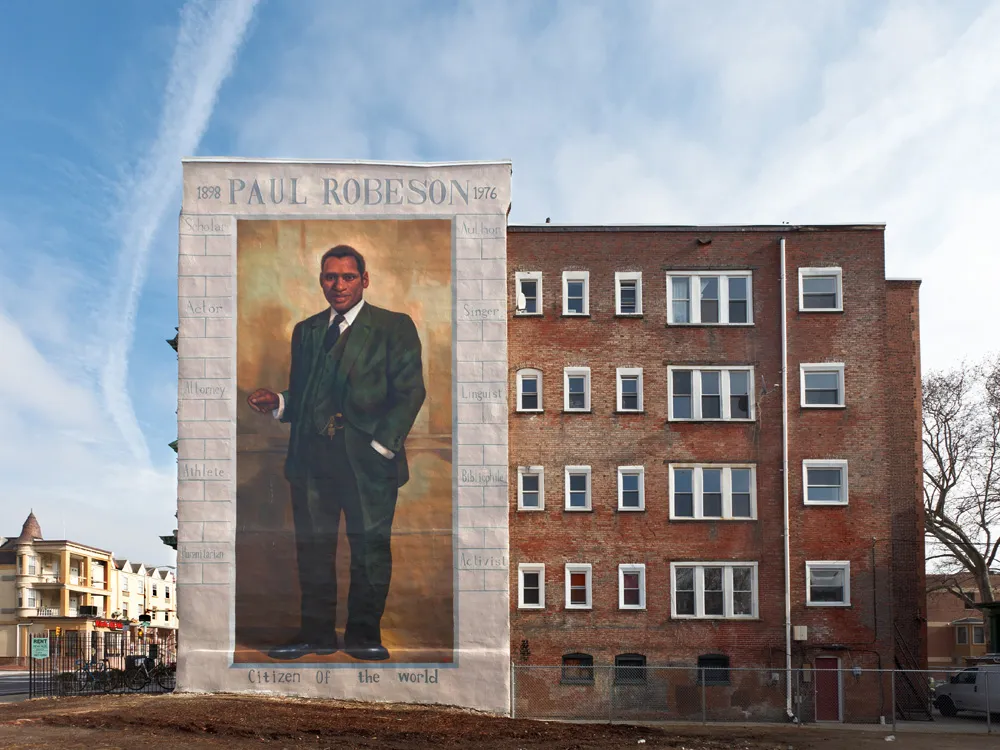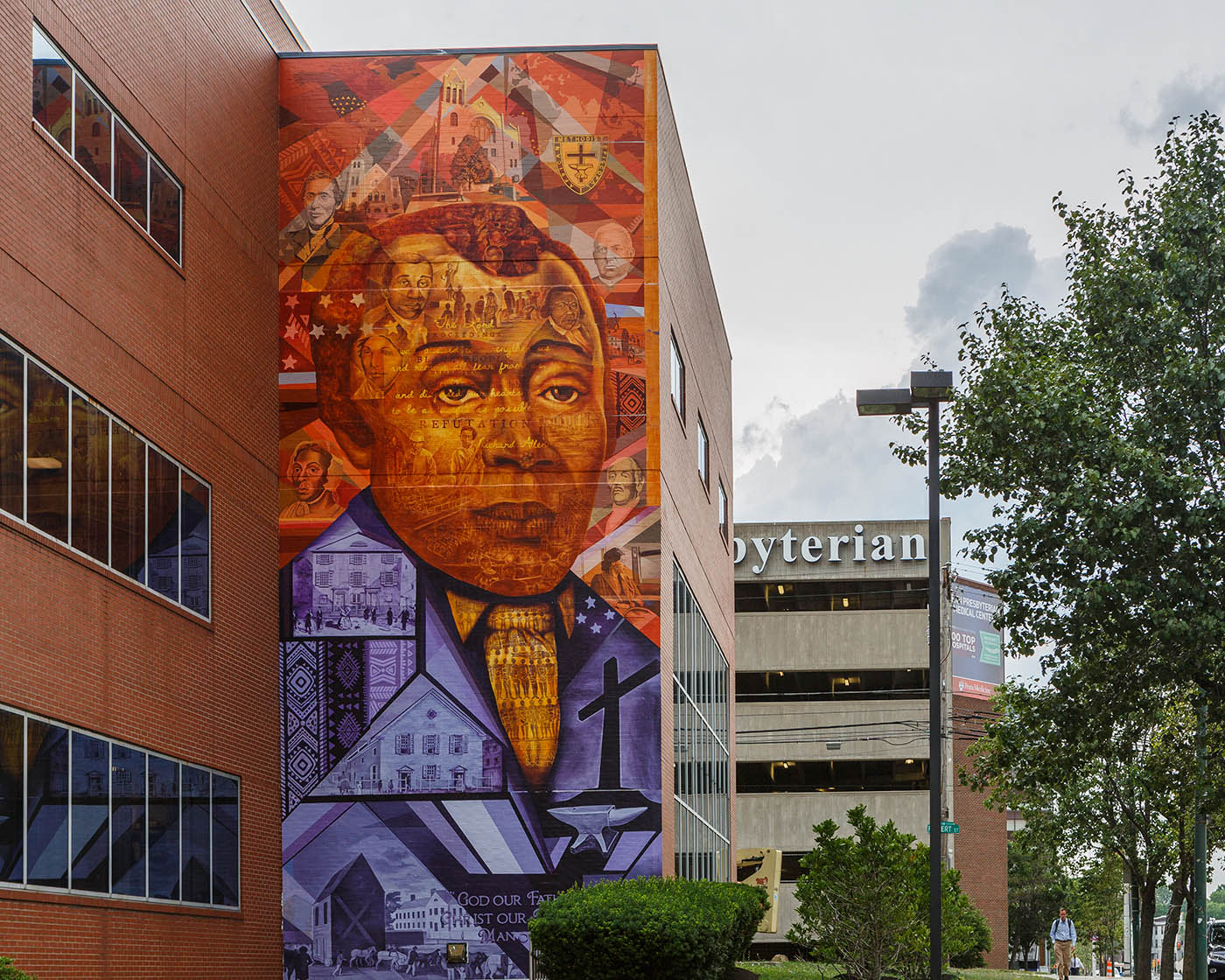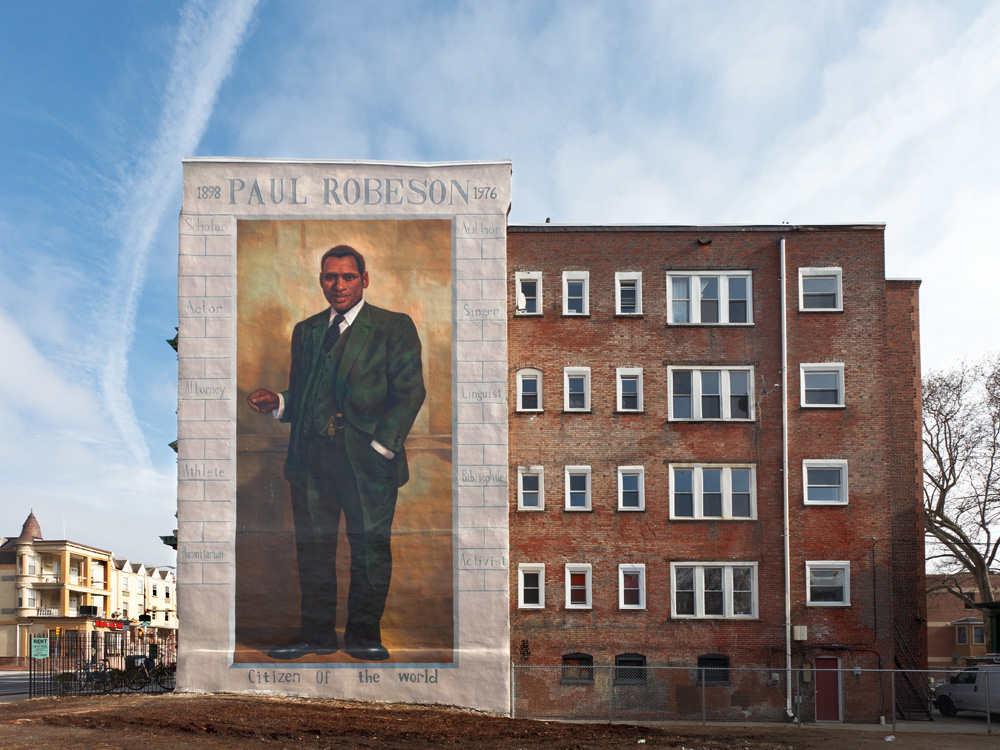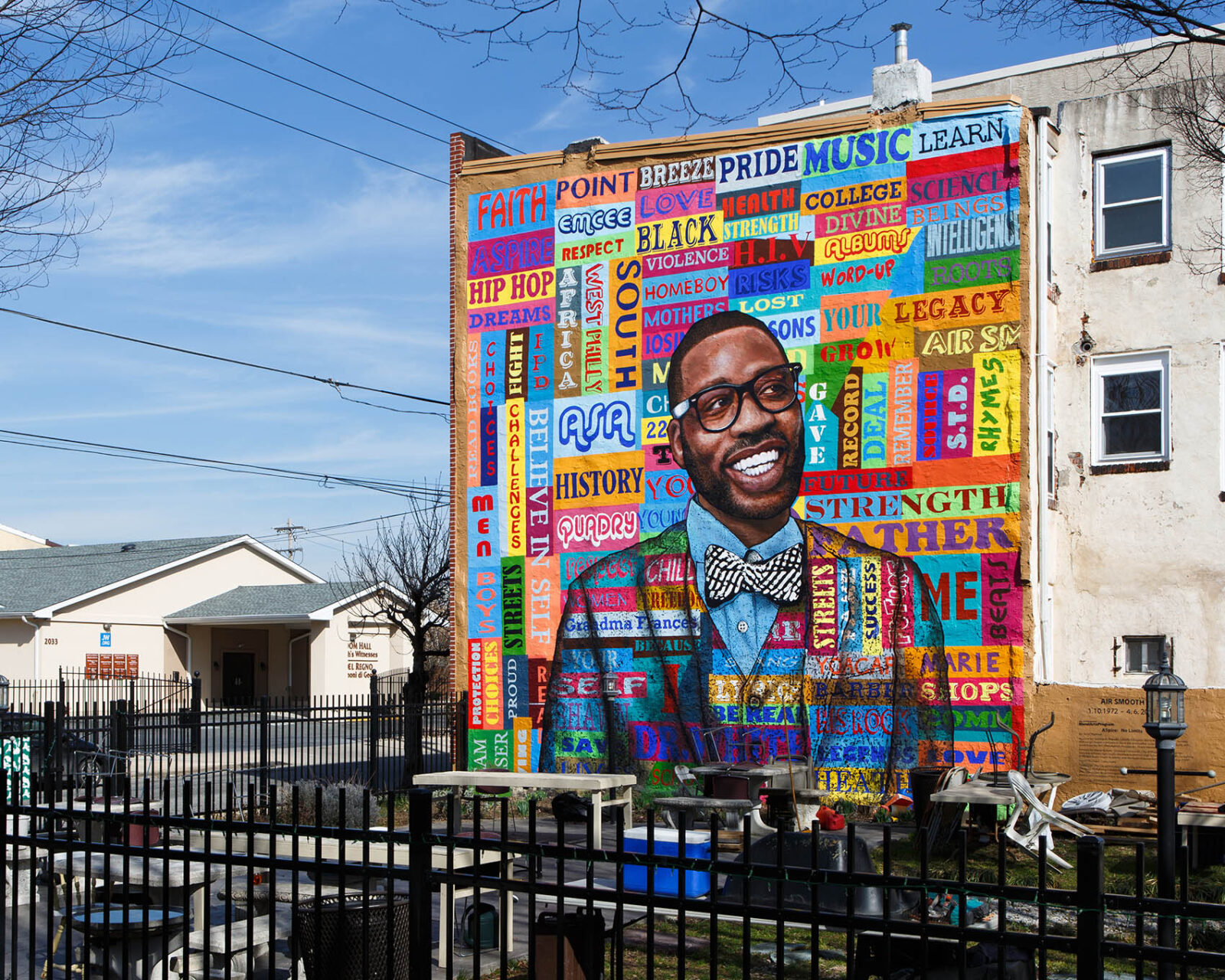Honoring Activism: A Look at Four Philly Murals That Pay Tribute to Local Activists

In the United States’ quest to form a more perfect Union, a certain breed of citizen has played a determining role. From the abolition of slavery, to the women’s suffrage movement, to the civil rights fights of the 1960s through today activists have been the agitators of the status quo. The men and women who actively pursue that American ideal of liberty and justice for all.
And over their 30+ year history, Mural Arts Philadelphia have created a number of murals to honor local activists and civic leaders. Today, I’d like to look a four of those murals and explore lives and work of the people who inspired them.
So, if you’ll please excuse a fair amount of select copying and pasting from Wikipedia (thank God ‘Guest Posting’ isn’t nearly as strict a deed as writing a paper for college!) I hope the purpose-filled lives of the following four people can work to inspire your week.

Richard Allen in West Philly
Mural Title: The Legacy of Bishop Richard Allen and the A.M.E. Church
Artist: Willis “Nomo” Humphrey
Map It!
Richard Allen (1760 – 1831) was a minister, activist, educator, writer, and one of America’s most active and influential black leaders.
Allen was born into slavery in Germantown in northwest Philadelphia. From a young age he was a devout worshipper, student, and advocate. After teaching himself to read and write, he attended the local Methodist Society, where he began to evangelize at age 17. His belief and his efforts at the church convinced his owner Stokeley Sturgis, to reconsider the morality of slave ownership. Allen was granted his freedom in 1780.
By 1787, Allen was a locally-lauded parishioner the historic St. George’s church. It was there that he led one of the first documented civil rights efforts in the United States. Spawned by the frustrations of persistent injustice, this momentous event sparked the movement that led to the emergence of the African-American churches at the forefront of our religious landscape today.
Elected the first bishop of the AME Church in 1816, Allen focused on organizing a denomination where free blacks could worship without racial oppression and where slaves could find a measure of dignity. He worked to upgrade the social status of the black community, organizing Sabbath schools to teach literacy and promoting national organizations to develop political strategies. (Source: Wikipedia)

Gloria Casarez in the Gayborhood
Mural Title: A Tribute to Gloria Casarez
Artist: Michelle Angela Ortiz
Map It!
Gloria Casarez (1971 – 2014) was an American civil rights leader and LGBT activist born and raised in the Kensington neighborhood of North Philadelphia, then Westmont, New Jersey.
In college at West Chester University, Casarez was active in student government and political activism, earning a Bachelor of Arts in Criminal Justice and a second Bachelor of Science in Political Science in 1993. She was President of the Latino Student Union and a representative to the Commission on the Status of Women, a network of students from state universities examining women’s issues on campus. From 1991-1996, Casarez was a founding member and community organizer for Empty the Shelters, a national student and youth led housing rights and economic justice organization. Casarez worked in North Philadelphia, leading grassroots campaigns and advocating for legislation supporting anti-poverty, economic justice and welfare rights for poor people.
From 1995-1998, Casarez was the Program Coordinator for the LGBT Center at the University of Pennsylvania, one of the oldest and most active centers of its kind in the United States. She developed innovative student-mentorship and programming for LGBT students of color, transgender and queer students on campus. Out Magazine named Casarez one of the “100 Most Influential Leaders of the New Millennium” in 1999.
At the age of 27, Casarez became the Executive Director of the Gay and Lesbian Latino AIDS Education Initiative (GALAEI) in Philadelphia. Casarez led GALAEI from 1999-2008, tripling the organization’s funding and developing nationally recognized programs serving men of color and transgender communities, including Philadelphia’s first mobile HIV testing centers and the Trans-health information project – the first multi-serve transgender health program.
Casarez became the City of Philadelphia’s first director of LGBT affairs, appointed in 2008. During her tenure as director, Philadelphia adopted the broadest LGBT rights protection in the nation and ranked as the number one city nationwide for LGBT equality. She married her long-time partner Tricia Dressel in 2011. Casarez passed away on October 19, 2014, at the age of 42, after a valiant battle with breast cancer. (Source: Wikipedia)

Paul Robeson in West Philly
Mural Title: Paul Robeson
Artist: Peter Pagast, 1999 / Ernel Martinez 2012
Map It!
Paul Leroy Robeson (1898 – 1976) was an American bass singer and actor who became an activist and involved himself with the Civil Rights Movement.
At Rutgers College, Robeson was an outstanding American football player and was the class valedictorian. He then had an international career in singing, with a distinctive, powerful, deep bass voice, as well as acting in theater and movies. He became politically involved in response to the Spanish Civil War, fascism, and social injustices.
Robeson believed that the struggle against fascism during the Spanish Civil War was a turning point in his life and transformed him into a political activist. In 1937, he used his concert performances to advocated for the war’s refugees. He permanently modified his renditions of Ol’ Man River from a tragic “song of resignation with a hint of protest implied” into a battle hymn of unwavering defiance. His business agent at the time expressed concern about his political involvement, but Robeson overruled him and decided that contemporary events trumped commercialism noting, “The artist must take sides. He must elect to fight for freedom or slavery. I have made my choice. I had no alternative.”
After the lynchings of four African Americans, Robeson met with President Truman and admonished Truman that if he did not enact legislation to end lynching, “the Negroes will defend themselves.” Truman immediately terminated the meeting and declared the time was not right to propose anti-lynching legislation. Subsequently, Robeson publicly called upon all Americans to demand that Congress pass civil rights legislation. Taking a stance against lynching, Robeson founded the American Crusade Against Lynching organization in 1946. This organization was thought to be a threat to the NAACP anti-violence movement. Robeson received support from W. E. B. Du Bois regarding this matter and officially launched this organization on the anniversary day of the Emancipation Proclamation, September 23.
His advocacy of anti-imperialism, affiliation with communism, and criticism of the United States government caused him eventually to be blacklisted during the McCarthy era. At one point even being denied a passport, because, as he was told by the State Department: “His frequent criticism of the treatment of blacks in the United States should not be aired in foreign countries.”
1958 saw the publication of Robeson’s “manifesto-autobiography”, Here I Stand. His passport was restored in June 1958 via Kent v. Dulles, and he embarked on a world tour using London as his base. By 1968, he had settled at his sister’s home in Philadelphia where he retired. (Source: Wikipedia)

Dr. Shawn White in South Philly
Mural Title: Aspire: No Limits
Artist: Ernel Martinez
Map It!
Dr. Shawn L. “Air Smooth” White (1972 – 2013) was a community leader, father, and HIV/AIDS activist.
Dr. White was born and raised in South Philadelphia and stayed true to his neighborhood roots, becoming a fixture in the Point Breeze section of the area. Sports and music were his early callings, earning him both a collegiate football scholarship and a record deal as an MC and producer with the hip hop group, Divine Beings in 1994. Throughout his musical career, he worked with artists such as Ahmir “Questlove” Thompson and Tariq “Black Thought” Trotter of The Roots, super producer and musician Larry Gold, Kenny Whitehead, Beanie Sigel (helping to launch his career), and more.
In 2004, Dr. White earned a Master of Human Services (MHS) from Lincoln University and in 2011, his Ph.D. from Cappella University where his studies focused on analyzing and evaluating HIV and sexually-transmitted diseases risk among young African American men. Concurrent with his studies, he worked in social service with the Youth Outreach Community Awareness Program (YOACAP) as a cast member, peer educator, and youth trainer for HIV/AIDS awareness. His sixteen-year affiliation with the organization kept him face-to-face with at-risk communities who were fighting the battle against HIV and AIDS.
In 2009, Dr. White began his work with the University of Pennsylvania as co-chair of the HIV prevention research division’s community advisory board and the HIV vaccine study-working group. He led SHAPE UP: Barbers Building Better Brothers. This health promotions program targeted young African-American men who socialized in barbershop settings, often a community gathering and safe space in urban communities.
While juggling full-time commitments to health awareness programs, Dr. White continued to work on his love of music, partnering with friend and musician JaRon Burnett, to form the PHREMEN Music Group. PHREMEN produces music for various uses in the music industry and is also home to the PHREMEN Audio Studio Academy, which gives young people access to state-of-the-art facilities, instruction, field trips, mentorship, and more. Intertwined with the fun-learning model is the promotion of HIV/STI awareness and conflict resolution. Despite his healthy appearance, Dr. White died of hypertension unexpectedly in 2013. (Source: Mural Arts)